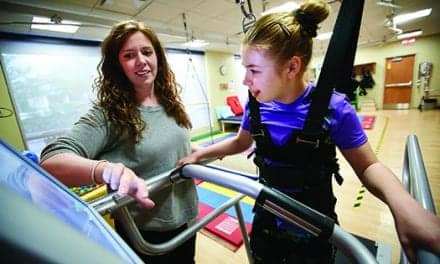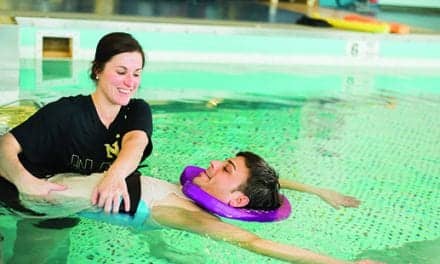Baby boomers may recollect the days of being screened for scoliosis in elementary or middle school, and while the practice was common for many years it has ceased in many areas.
Some may also recall when kids diagnosed with scoliosis wore a full-torso brace that extended from the pelvis to the base of the skull. Designed by Milwaukee-area physicians and commonly referred to as "The Milwaukee Brace," it was the most popular bracing approach in past decades.
Screenings and treatment approaches have become more varied and bracing options have expanded.
Wisconsin is one of more than 25 states where school screenings are not currently mandated; however, many key organizations recognize the benefits of screening programs. Most physicians perform screenings during annual check-ups, but a gap may exist because many adolescents do not have routine wellness doctor visits.
Most children with scoliosis have mild curves and won’t need aggressive treatment, and traditionally in the United States, treatment involved a wait-and-see approach. Physicians have most commonly monitored curve progression and initiated treatment if the curve passed a certain threshold. Typically, physicians recommend bracing or surgery, or both.
In past decades, PT has played a minor role in scoliosis treatment in America, but it is now becoming more popular among a growing number of patients.
One PT-based approach has seen increased popularity in the nationwide within the past 5 years: The Schroth method, which is a conservative, nonsurgical, exercise-based approach developed in Germany in the 1960s. In Europe, more than 3,000 patients are treated with Scroth annually. Today, fewer than 20 US-based therapists in the are Schroth-certified; three are on staff at a Milwaukee-area clinic that draws patients from across the nation.
Schroth involves an attempt to reduce curve progression and provides additional benefits, such as improved breathing. Patients work intensively with a PT, learning how to expertly perform exercises specific to their scoliosis curve pattern. In many patients, Schroth is combined with the Rigo-System Cheneau (RSC) brace. Until recently, the brace was available only in Europe.
Many US physicians say research is inconclusive for bracing or PT. With Schroth, most patients report a benefit of being empowered to take action in addressing scoliosis, and many report improved postural deformity. PTs at Spinal Dynamics of Wisconsin have successfully prevented surgery for some patients who believed it was their only option, including those who travel to the clinic from out of state. In some patients, curve reduction has been achieved.
Spinal Dynamics offers the following on the first Saturday of each month: free screenings for children ages 10 to15 at 8 am to 8:30 am; free lecture about scoliosis and the Schroth treatment at 10:30 to noon. Sessions are at 2300 N Mayfair Rd, Suite 555, in the Mayfair Bank Tower. Registration is required. Visit the Web site for more information.



